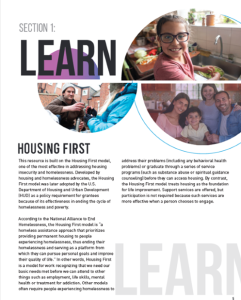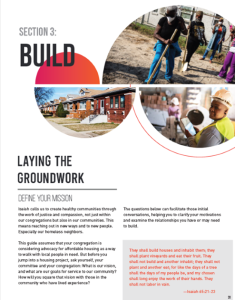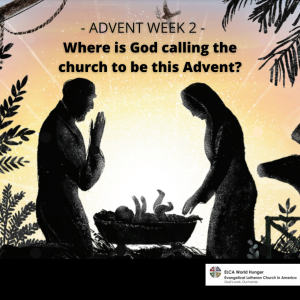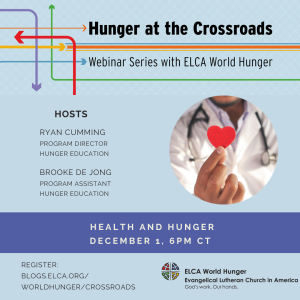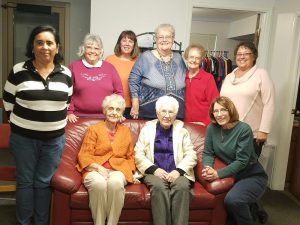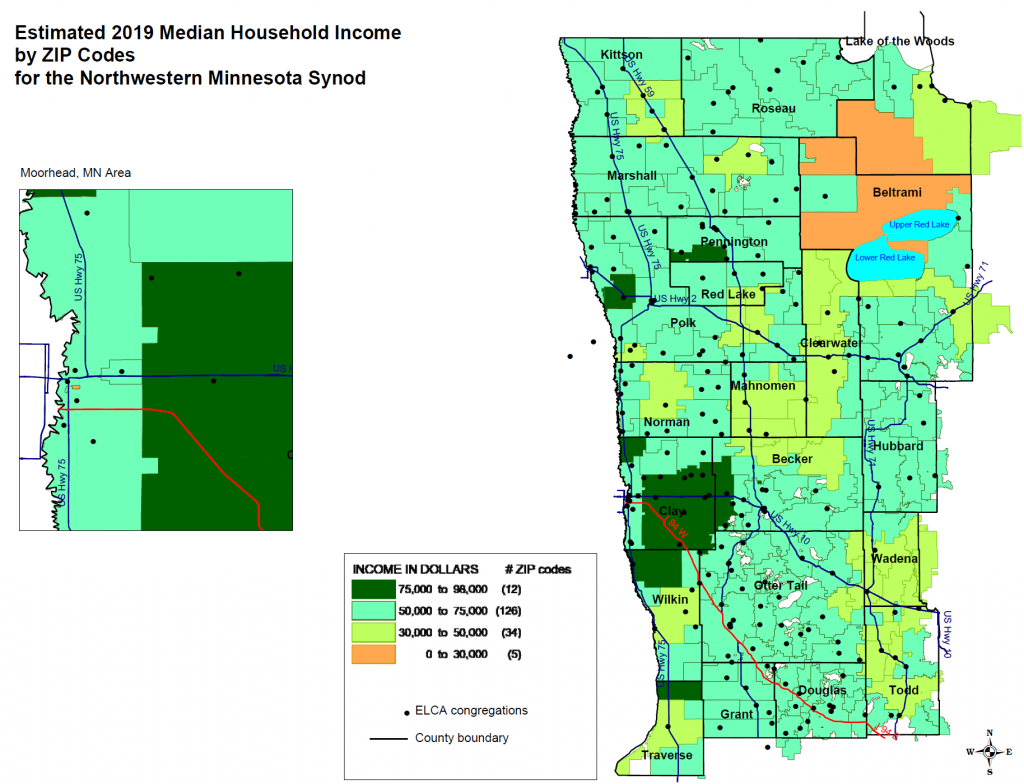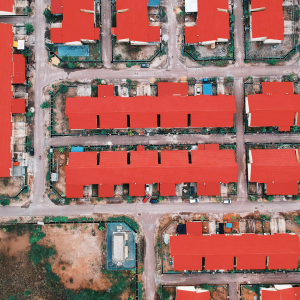ELCA World Hunger’s 40 Days of Giving
Lent 2022
In English and en Espanol

Week 4: Transformed in the Wilderness
“They ate the crops of the land” (Joshua 5:12)
Read
- Joshua 5:9-12
- Psalm 32
- 2 Corinthians 5:16-21
- Luke 15:1-3, 11b-32
Reflect
The reading from Joshua for this week is brief, but it recounts the time the Hebrews, who left Egypt under God’s care, had so longed to see: the end of their exodus and the beginning of their life in the Promised Land of Canaan. No longer would their food rain down from the heavens; now, they would be fed by their own produce:
The manna ceased on the day they ate the produce of the land, and the Israelites no longer had manna; they ate the crops of the land of Canaan that year (Joshua 5:12).
Certainly, the people’s entrance into the Promised Land is not the end of their dependence on God. Their food may no longer miraculously fall from the sky, but a new miracle springs from the land God created and is nurtured by farmers who embody God’s creative care. Settling in Canaan is just the beginning of the story of God’s people — not the end.
But there is a transformation in the now-settled people, evident in the difference between manna from heaven and “the crops of the land.” In the common language of today’s world, we might call this the difference between charity and self-sufficiency.
The church has been involved in responding to human need, especially hunger, since its very beginning. The sacrament of Holy Communion began as a full meal in the Christian community, particularly for those who otherwise might not have been able to feed themselves. By the second and third centuries, care for people who were hungry or poor was so central to the church’s identity that bishops, whose roles included managing the church’s social ministries, were sometimes called “lovers of the poor.”
Feeding people who hunger is still crucial to the church’s identity. Our latest survey data show that well over 70% of ELCA congregations participate in direct-feeding ministries. Early numbers indicate that over 95% of congregations participate in some form of response to hunger. Feeding ministries can be crucial lifelines for the more than 38 million people in the United States who are uncertain of their next meal. During the first months of the COVID-19 pandemic in 2020, with sudden job loss and supply chain shortages, feeding ministries such as these swiftly adapted to meet the exploding need. This was critical support, particularly for those neighbors unable to access social safety-net programs such as SNAP or the federal stimulus payments.
Feeding ministries stand at the forefront of hunger work, providing opportunities for neighbors to build relationships and for communities to draw together toward effective solutions. But ending hunger requires more. As theologian Samuel Torvend has written, “In addition to charitable response is discerning why people … are suffering in the first place. And that moves us from charitable giving … into asking the larger question, which is, ‘Why is there injustice? What is it within the larger system in which people live that produces this kind of suffering?’”
Behind the long lines at food pantries and the pallets of goods at food banks lies the reality that ending hunger will require more than food. There are some times when we must focus our efforts together on meeting immediate need. But at all times, the church is called to something more.
The church’s work in hunger responds not only to a problem but to a promise. We know by faith that hunger is not what God intends, that the One who created and sustains us is leading us to a future in which all will be fed, as surely as God led our ancestors through the desert to the Promised Land. The response of the church is rooted in the larger witness of faith holding that the systems and conditions that create scarcity are wrong, and that we can still create a life of security and sufficiency, even on this side of the fullness of God’s reign.
In Pueblo County, Colo., Posada accompanies neighbors who experience homelessness as they work together toward this vision. With support from ELCA World Hunger, Posada aspires to provide for the immediate needs of people who lack stable housing while enabling them to address the problems that have led to their situation. Daniel is one of many people Posada has worked with to secure housing. Assisted by Posada, Daniel was able to transition from a long-term care facility to stable housing that he can call his own. Posada continues to work with him so that he can pay for utilities.
Posada helps neighbors meet their most immediate needs, connecting them to programs that offer funds for food and shelter. But the work doesn’t stop there; Posada works with neighbors to secure the housing, support and stability they will need to thrive in the future.
As Moses and the Hebrews left Egypt, they were sustained by God’s gift of manna. This food from heaven satisfied their hunger and helped them survive their time in the wilderness. But God had more in store for them — not just an end to their hunger but a new life and hope, a future as a people renewed in their relationship to God, to each other and to a land
they could call their own. Eating their fill of manna was not the end but the means, allowing them to reach a place where they would thrive on “the crops of the land.”
Amid our own trial and challenge during a pandemic that stretched our food systems and charitable ministries to near-capacity, we might forget the vision that inspires the church’s hunger ministries in the first place. But during Lent, a season of self-reflection and renewal, the crossing over of the Hebrews from the wilderness to Gilgal, where they would become the nation Israel, reminds us of that vision. We cling to this promise that God will provide not just manna today but “crops of the land” tomorrow, granting us a new opportunity to build community and share in God’s journey toward a just world where all are fed.
This is the vision that inspires, motivates and shapes the many ways this church is active in the world, responding not just to the problem of hunger but to the promise of God for a future in which all who are weary — from journeying, from struggling, from working, from waiting — will find rest.
Ask
- What does “home” mean to you? What do you think it meant for the Israelites to settle in their new home and to eat the crops of their own land?
- How might uncertainty about housing impact other aspects of someone’s life?
- What might Posada’s ministry say about what it means to be the people of God? How does addressing housing insecurity reflect the church’s calling to be the people of God?
- Consider your community. What housing issues do you and your neighbors face? How might your congregation be part of addressing these issues?
Pray
God of our wanderings and our settling, you guided your people through the wilderness with gifts of manna and water to sustain them. Be with us in our own times of uncertainty and fear. Send your Spirit among us, that your church may be a sign of welcome in the world. When we are comfortable, open our hearts to our neighbors’ discomfort. When we are uncomfortable, sustain us with hope and courage. Bless us, that we may be blessings to one another. In your name we pray, amen.
SEMANA 4: Transformados en el desierto
“El pueblo se alimentó de los frutos de la tierra” (Josué 5:12).
Lecturas: Josué 5:9-12; Salmo 32; 2 Corintios 5:16-21; Lucas 15:1-3, 11b-32.
La lectura de Josué para esta semana es breve, pero relata el tiempo que los hebreos, que salieron de Egipto bajo el cuidado de Dios, habían anhelado ver: el fin de su éxodo y el comienzo de su vida en la Tierra Prometida de Canaán. Su alimento ya no iba a llover más de los cielos; ahora iban a ser alimentados por sus propios productos:
Desde ese momento dejó de caer maná, y durante todo ese año el pueblo se alimentó de los frutos de la tierra (Josué 5:12).
Ciertamente, la entrada de la gente en la Tierra Prometida no es el fin de su dependencia de Dios. Tal vez su comida ya no cae milagrosamente del cielo, pero un nuevo milagro brota de la tierra que Dios creó y es cultivado por agricultores que encarnan el cuidado creativo de Dios. Establecerse en Canaán es sólo el comienzo de la historia del pueblo de Dios —no el final.
Pero hay una transformación en la gente ahora asentada, evidente en la diferencia entre el maná del cielo y “los frutos de la tierra”. En el lenguaje común del mundo de hoy, podríamos llamar a esto la diferencia entre caridad y autosuficiencia.
Desde sus inicios, la iglesia ha estado involucrada en responder a las necesidades humanas, especialmente al hambre. El sacramento de la Sagrada Comunión comenzó como una comida completa en la comunidad cristiana, particularmente para aquellos que de otra manera no habrían podido alimentarse. En los siglos II y III, el cuidado de las personas que tenían hambre o eran pobres era tan central para la identidad de la iglesia que los obispos, cuyos roles incluían la gestión de los ministerios sociales de la iglesia, a veces se llamaban “amantes de los pobres”.
Alimentar a las personas que tienen hambre sigue siendo crucial para la identidad de la iglesia. Los últimos datos de nuestra encuesta muestran que más del 70% de las congregaciones de la ELCA participan en ministerios de alimentación directa. Las primeras cifras indican que más del 95% de las congregaciones participan en alguna forma de respuesta al hambre. Los ministerios de alimentación pueden ser líneas de vida cruciales para los más de 38 millones de personas en los Estados Unidos que no están seguras de su próxima comida. Durante los primeros meses de la pandemia de COVID-19 en 2020, con la pérdida repentina de empleos y la escasez en la cadena de abastecimiento, los ministerios de alimentación como estos se adaptaron rápidamente para satisfacer la creciente necesidad. Este fue un apoyo crucial, particularmente para aquellos vecinos que no pueden acceder a programas de redes de seguridad social como SNAP o los pagos de estímulo federal.
Los ministerios de alimentación están a la vanguardia del trabajo contra el hambre, brindando oportunidades para que los vecinos construyan relaciones y para que las comunidades se unan a favor de soluciones efectivas. Pero acabar con el hambre requiere más. Como ha escrito el teólogo Samuel Torvend: “Además de la respuesta caritativa, es discernir por qué las personas … están sufriendo en primer lugar. Y eso nos mueve de las donaciones caritativas… a hacer la pregunta más amplia, que es: ‘¿Por qué hay injusticia? ¿Qué cosa dentro del sistema más amplio en el que la gente vive es lo que produce este tipo de sufrimiento?’”
Detrás de las largas filas en las despensas de alimentos y las paletas de mercancías en los bancos de alimentos se encuentra la realidad de que acabar con el hambre requerirá más que alimentos. Hay ocasiones en las que debemos centrar nuestros esfuerzos juntos en satisfacer las necesidades inmediatas. Pero en todo momento, la iglesia está llamada a hacer algo más.
El trabajo de la iglesia en relación con el hambre responde, no sólo a un problema, sino también a una promesa. Sabemos por fe que el hambre no es lo que Dios quiere, que Aquel que nos creó y nos sostiene nos está llevando a un futuro en el que todos serán alimentados, tan seguramente como cuando guiaba a nuestros antepasados a través del desierto hacia la Tierra Prometida. La respuesta de la iglesia está enraizada en el testimonio más amplio de la fe que sostiene que los sistemas y las condiciones que crean escasez son incorrectos, y que todavía podemos crear una vida de seguridad y suficiencia, incluso en este lado de la plenitud del reino de Dios.
En el condado de Pueblo, Colorado, Posada acompaña a los vecinos que experimentan la falta de vivienda mientras trabajan juntos por esta visión. Con el apoyo de ELCA World Hunger, Posada aspira a satisfacer las necesidades inmediatas de las personas que carecen de vivienda estable, al tiempo que les permite abordar los problemas que han causado su situación. Daniel es una de las muchas personas con las que Posada ha trabajado para asegurar una vivienda. Con la ayuda de Posada, Daniel pudo hacer la transición de un centro de atención a largo plazo a una vivienda estable que puede llamar suya. Posada continúa trabajando con él para que pueda pagar los servicios públicos.
Posada ayuda a los vecinos a satisfacer sus necesidades más inmediatas, conectándolos con programas que ofrecen fondos para techo y comida. Pero el trabajo no se detiene ahí; Posada trabaja con los vecinos para asegurar la vivienda, el apoyo y la estabilidad que necesitarán para prosperar en el futuro.
Cuando Moisés y los hebreos salieron de Egipto fueron sustentados por el regalo de Dios llamado maná. Este alimento del cielo satisfizo su hambre y les ayudó a sobrevivir su tiempo en el desierto. Pero Dios tenía más cosas reservadas para ellos —no solo poner fin a su hambre, sino también una nueva vida y esperanza, un futuro como pueblo renovado en su relación con Dios, de los unos con los otros y con una tierra que podrían llamar suya. Comer maná hasta saciarse no era el fin sino el medio, lo que les permitía llegar a un lugar donde florecerían con “los frutos de la tierra”. En medio de nuestra propia prueba y desafío durante una pandemia que estiró a casi su capacidad nuestros sistemas alimentarios y ministerios caritativos, pudiéramos olvidar la visión que inspira los ministerios de hambre de la iglesia en primer lugar.
Pero, durante la Cuaresma, una temporada de autorreflexión y renovación, el paso de los hebreos desde el desierto hasta Gilgal, donde se convertirían en la nación de Israel, nos recuerda esa visión. Nos aferramos a esta promesa de que Dios proveerá no solo maná hoy, sino también “frutos de la tierra” mañana, otorgándonos una nueva oportunidad para construir comunidad y participar en la jornada de Dios hacia un mundo justo donde todos sean alimentados.
Esta es la visión que inspira, motiva y moldea las muchas formas en que esta iglesia está activa en el mundo, respondiendo no solamente al problema del hambre, sino también a la promesa de Dios para un futuro en el que todos los que están cansados —de la jornada, la lucha, el trabajo, la espera— encontrarán descanso.
Preguntas para la reflexión
- ¿Qué significa “hogar” para usted? ¿Qué cree que significaba para los israelitas establecerse en su nuevo hogar y comer los frutos de su propia tierra?
- ¿Cómo podría la incertidumbre sobre la vivienda afectar otros aspectos de la vida de alguien?
- ¿De qué manera abordar la inseguridad de la vivienda refleja el llamado de la iglesia a ser el pueblo de Dios?
- Considere su comunidad. ¿Qué problemas de vivienda enfrentan usted y sus vecinos? ¿Cómo podría su congregación ser parte de la solución de estos temas?
Oración
Dios de nuestras andanzas y nuestro asentamiento, guiaste a tu pueblo a través del desierto con regalos de maná y agua para sustentarlos. Quédate con nosotros en nuestros propios tiempos de incertidumbre y temor. Envía tu Espíritu entre nosotros para que tu iglesia sea una señal de bienvenida en el mundo. Cuando estemos cómodos, abre nuestros corazones a la incomodidad de nuestros vecinos. Cuando nos sintamos incómodos, sostennos con esperanza y valor. Bendícenos, para que seamos bendiciones los unos para los otros. En tu nombre oramos, amén.


